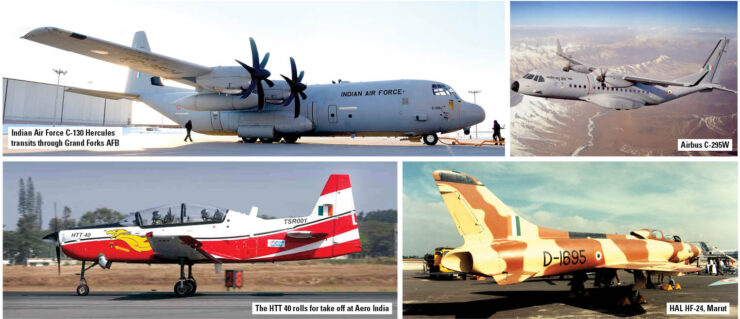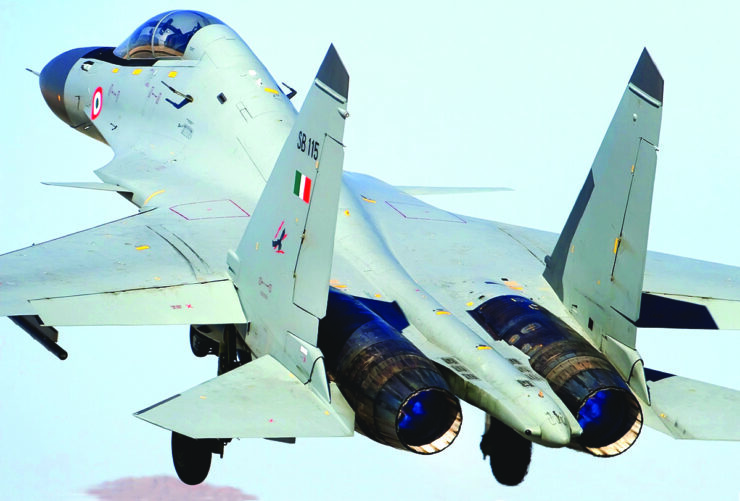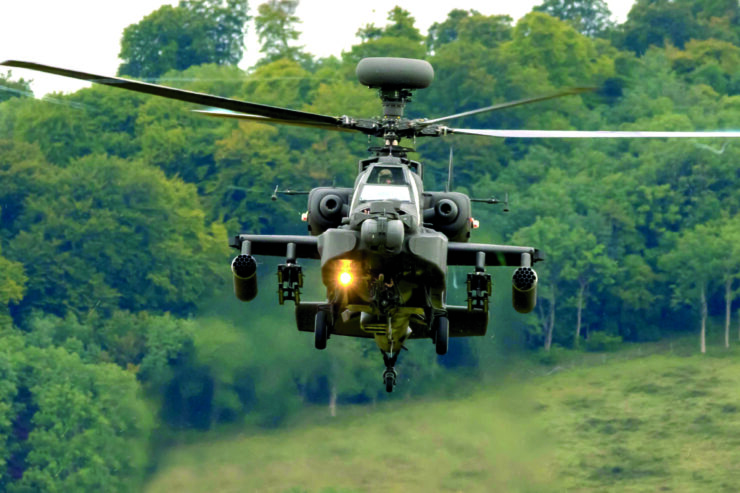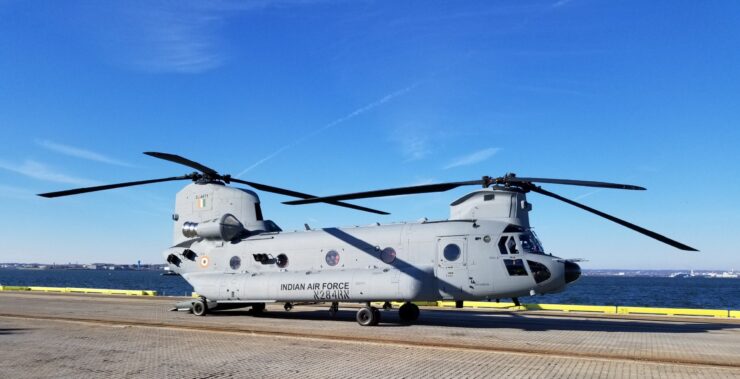
India’s defence aviation industry is at times accused of not having significantly met the indigenous production needs of the air arms of the Indian armed forces despite being in existence for nearly seven decades.Hindustan Aeronautics Ltd (HAL), for long had mastered the art of license production. After a partial success with the HF-24 ‘Marut’, and now with Light Combat Aircraft (LCA) ‘Tejas’ and Advanced Light Helicopter (ALH), it seems to have come of age.
Similarly, the Defence Research and Development Organization (DRDO) set up early after independence, today has 52 research laboratories. The first Ordnance Factories (OF) in India were set up by the British in 1787. Today there are 41 OFs with product range in the areas of air, land, and sea systems.
There is huge infrastructure but physical inductions into the armed forces could have been many more. The recent “Atmanirbharta” (indigenisation) initiatives of the government are in the right direction and should bear fruit soon.
IAF Depleting Numbers and Sourcing Options
The Indian Air Force’s (IAF) fighter squadron strength is down to 32 from the authorized 42. Numbers could go down further if immediate acquisitions are not initiated. The IAF also needs many other platforms and systems. The Indian military aviation market continues to be huge. Immediately in the pipeline beyond the two LCA Mk1 squadrons are 83 LCA Mk1A, 12 additional Su-30 MKI and 21 MiG 29s. Also there are reports that some old Mirage 2000 aircraft may be bought for sourcing spares.
The earliest first flight for Mk II may take place in 2025 and the actual induction around 2030. The IAF proposes to buy 200 LCA Mk II.
LCA production should be ramped up to around 16-20 aircraft per year to stem depletion of the IAF numbers.
The Request for Proposal (RFP) for IAF’s 114 more MRCA has still to be issued. Will IAF settle for more Rafale or wait for LCA Mk II is being contemplated.
The IAF fully supports DRDO’s fifth-generation stealth Advanced Medium Combat Aircraft (AMCA). This is a work still in the initial progress and the DRDO says that the aircraft will fly around 2025 and induction around 2028. More realistic figures could be 2028 and 2035 respectively.
The almost three-decade-old fleet of nearly 100 An-32s, despite upgrades, will one day need replacement/augmentation. The replacement of 56 HS-148 ‘Avro’ aircraft with the Airbus C295W military transport aircraft (9-ton payload) has finally been cleared. 40 of these will be built in India through a JV between Tata Advanced Systems Ltd (TASL) and the Airbus Defence and Space. If successful, it could one day also replace the An-32.
The IAF also desperately needs additional Flight Refueller Aircraft (FRA) and AEW&C aircraft. DRDO is being transferred Air India’s Airbus A-321 to develop a larger indigenous AWACS.
With the success of ALH variants, including of LUH and LCH, it should be possible to meet IAF’s helicopter requirements indigenously. A medium variant is also planned by HAL.

IAF has already given the RFP to HAL for 70 HTT-40 basic trainers with an option for 38 more. Similarly, IAF awaits successful completion of developmental testing of IJT. Later the LCA trainer could evolve into a Lead-in Fighter Trainer (LIFT).
The midsized, 80-90 seat Indian Regional Jet (IRJ) has still to take off. Similarly, the Saras small transport (20 seats) is still struggling. There is a great requirement for international class simulators for all our platforms.
Ground Based Radars
The DRDO has been successful in developing the INDRA series of radars, the Rajendra fire-control radar for the Akash missile system, and the Central Acquisition Radar (CAR). The Long Range Tracking Radar (LRTR) has been developed with the assistance of ELTA of Israel. There are many others in the pipeline for all the three services. The LRTR, with a 3D AESA, was developed by DRDO with ELTA’s assistance.\
The 3D Multi-Function Control Radar (MFCR) was developed as part of the Indian ABM programme in cooperation with Thales of France. After the induction of 19 Israeli ELTA 2284 Medium Powered Radars (MPR), IAF awaits DRDO’s ‘Anudhra’ MPR. The 4D, Low-Level Transportable Radar (LLTR), ‘Ashwini’ is also under trial. Bharat Electronics Ltd (BEL) and Bharat Dynamics Limited (BDL) are great contributors to the indigenous effort.
Weapon Systems
The well-beyond their extended-life S-125 Pechora and OSA-AK SAM-8 surface-to-air missiles are being replaced by indigenous Akash medium-range system, and the Israeli SPYDER (Surface-to-air Python and DERby) mobile air defence missiles systems. There is also a plan to upgrade Pechora.
LR and MR SAM are also being developed in collaboration with Israel. DRDO is in talks with MBDA to develop Maitri LLQRM (Low-Level Quick Reaction Missile) for all three services. Ultimately India needs to develop long range AD systems of the S-400 class.
Astra BVR air-to-air missile is a success story and under induction. Ultimately we need to be able to indigenously develop Meteor class of aerial missiles.

Work is on to develop laser kits for bombs, and also to develop glide bombs. This needs accelerating. BrahMos is a success and now deployed by all the three services. BrahMos II would have much greater ability. Nirbhay cruise missiles would also augment precision-strike capability.
Unmanned Aerial Systems
All the three services have been dependent for their larger UAVs on Israel and there is a likelihood of signing a contract with General Atomics, USA, for purchase of Predator MQ-9 drone variants for all the three services.
Many Indian private sector companies are now in the small UAV sector. Major orders have been placed for small UAVs. Adani-Elbit has a joint-venture for the Hermes class of UAVs. Bangalore based Alpha Design in a joint-venture with Elbit is working on cost effective loitering munitions.
Meanwhile, DRDO has the Rustom/Tapas variants of Combat UAVs evolving. DRDO’s “Ghatak” UCAV is being planned to be a self-defending high-speed reconnaissance UAV with weapon firing capability. HAL is also working on a Manned Unmanned Teaming systems. Unmanned is where the future is and India must endeavour to become self-reliant.
Indian Navy and Army Aviation Requirements
The Indian Army and Navy require helicopter variants in large numbers. They also need air defence radars and missiles. They require UAVs.
Navy requires a variety of aircraft for maritime and carrier-based roles, including fighters. Army requires anti-tank and other surface weapons. The Tactical Battle Support Helicopter or Indian Multi-Role Helicopter (IMRH) is a tri-services project. Clearly India has huge defence requirements to support indigenous production. There is great export potential in Asia and Africa for tapping.
Private Sector
Big private industrial houses have come into defence manufacturing in a serious way. We have great success in ship-building both through public and private sector shipyards. Tata Power and Larsen & Toubro manufacture the Pinaka multi-barrel rocket launchers. L&T was involved in developing the hull for a nuclear submarine for the Indian Navy.
And Tata Power is handling the modernization of airfield infrastructure for IAF. Tata Aerospace and Defence (Tata A&D) have been making the AH-64 Apache combat helicopter fuselage. They are also making aero-structures for Boeing’s CH-47 Chinook helicopters.
All C-130Js delivered to customers around the world have major aero-structure components from India producing 24 C-130 empennages annually. Sikorsky—a Lockheed Martin company—also relies on TASL in Hyderabad, India, as the manufacturing base for its global supply of cabin for the S-92 helicopter. Tata Power SED also makes Akash launchers.
GE has a huge India presence. Tata group is working with GE to manufacture CFM International LEAP engine components in India. Lockheed Martin selected TASL to produce F-16 wings in India. EADS unit Cassidian plans to make India a hub for a large number of defence products. BAE’s US arm plans to shift the Howitzer assembly to India. There is also a large MRO market that can create an R&D base for engineering services.
The Centum Group, a Bangalore-based defence electronics company has been supplying to French defence solutions provider Thales. Mahindra Group makes large aero-components and a variety of metallic components for several Airbus aircraft. Bharat Forge is becoming a major player in the artillery and specialized vehicles segment. Several small companies—such as Dynamatic Technologies, Avasarala Technologies, DefSys, Ravilla, and Taneja Aerospace—have of late acquired advanced technological capabilities.
Dynamatic Technologies makes assemblies of vertical fins for Sukhoi 30 MKI fighters. Samtel electronics makes SU-30 Head-Up Displays and other electronics. Ananth Technologies is a leading Aerospace and Defence manufacturer in India with over 1,200 employees across five locations, supplying to ISRO and HAL. Bangalore-based Alpha Design Technologies specializes in defence electronics, avionics and space satellites systems. Godrej & Boyce are into high precision spacecraft components made of exotic alloys for ISRO. Vem technologies are into various systems from the nose to the tail for all major categories of Missiles. Thirty percent of LCA is outsourced to the local industry.

The CII has appreciated the opening of small and medium enterprises (SMEs) and it is bound to spur more design development activities within the country.
Many of the licensing needs have been dispensed with and export clearances are virtually online. The Indian industry, especially MSMEs and start-ups in defence production, need hand-holding. Over the next 7-8 years, India’s defence modernisation plan is projected at $130 billion and nearly half of these contracts are expected to be placed with domestic manufacturers.
Critical Technologies India Must Acquire
All C-130Js delivered to customers around the world have major aero-structure components from India producing 24 C-130 empennages annually
High speed, agile, stealthy platforms with low maintenance and high turnaround are required. Other critical technologies include lighter and yet stronger aero-structures, mouldable layered composites materials, higher levels of stealth, hypersonic platforms and weapons, optionally manned systems, stealthy rotary wings and heavy platforms, engines with super-cruise and reduced IR (infrared) signature, and greater levels of thrust vectoring, AESA radars, unmanned airlift, AESA radars, advanced IR technologies, Artificial intelligence (AI) and Robots, Directed Energy weapons (DEW), and EW hardware… India must also push to make a commuter aircraft to step to the Heavy transport next.
And lastly, the need for greater R&D funding.
Way Ahead for India
Investment in R&D is the crucial first step to become independent in defence production. India needs to get out of the socialistic workforce ethos with low productivity culture. Technocrat business trained managers and not generalist bureaucracy must control defence production.
The government’s move to reorganise and disinvest in ordnance factories is a good move. Privatisation will bring better business practises and accountability. Defence procurement has to be made more Indian private sector-friendly.
The government’s thrust to increase the share of all manufacturing from the current level of 15 per cent of Gross Domestic Product (GDP) to 25 per cent is a welcome one as defence will be a significant area.
The negative list of items for defence imports of 209 items include helicopters, towed artillery guns, short-range surface-to-air missiles, cruise missiles, offshore patrol vessels, electronic warfare systems, next-generation missile vessels, floating dock and anti-submarine rocket launchers, next-generation corvettes, airborne early warning systems, tank engines and radars, among others.
Indian industry’s strengths need harnessing. Time to act is now lest India misses the bus again.
–The writer is a IAF veteran and Director-General Centre for Air Power Studies (CAPS). The views expressed are personal and do not necessarily reflect the views of Raksha Anirveda









